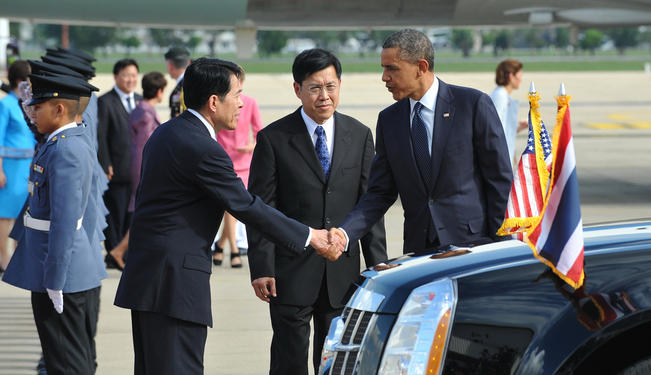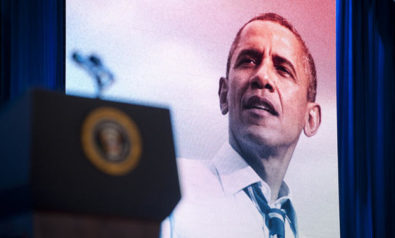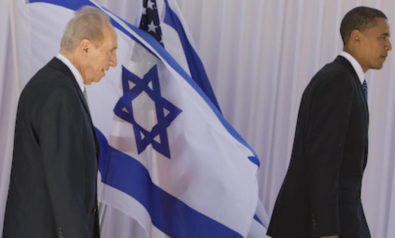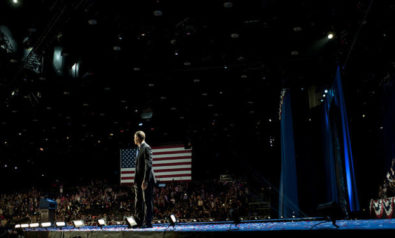In his first term, Obama had indicated that Washington was serious about its pivot to Asia. However, much remains to be seen in order to prove that the US means business.
The world has seen a shift in the international system over the last few decades. The world’s attention is focused on China, ASEAN states are becoming more assertive — encouraged by steady economic growth rates — whilst Japan’s influence in East and Southeast Asia is declining. Asia-Pacific has become the hub of the international economy. Being home to approximately four billion people and a number of the fastest-growing economies on earth, the region today attracts investors from all over the globe.
Meanwhile, the US “Pivot to Asia” has evoked various outcries from European governments; quite rightly, many leaders regard the pivot as undermining their role in the international system. In his first term, the Obama administration initiated the shift away from the decade long transatlantic relationship to the transpacific axis. The United States' engagement strategy in the Asia-Pacific region is to strengthen existing partnerships, and foster trade relations with regional countries in order to counterbalance a reemerged China and enter the regional economic rise.
Engagement with ASEAN
President Obama has put tremendous efforts into burnishing relations with Asia-Pacific nations on both multilateral and bilateral bases. Since the region increasingly lost significance in American foreign policy after the fall of the Iron Curtain, the administration has begun to reinforce alliances with nations in the region.
Over the first term, Obama’s foreign policy has been falling on fertile ground in Southeast Asia. The US ratified a framework for regional cooperation: ASEAN’s Treaty of Amity and Cooperation. He attended the East Asia Summit, becoming the first US president to do so, while the first resident US Ambassador to ASEAN, Ambassador David L. Carden, has been appointed. Ongoing negotiations for the Trans-Pacific Partnership (TPP) and the launch of the US-ASEAN Expanded Economic Engagement (E3) are indicators of increasingly intertwined cooperation. After decades of isolation, Myanmar has recently shown signs of opening. Obama showed an increased US interest in the country when visiting last November, by encouraging the transition and thus setting Washington up to gain a foothold in the resource rich country.
Although the loudly proclaimed “Pivot” has not entirely taken place yet, America has gained traction in Southeast Asia. Quite simply, the US is back in the region after two decades of declining relations.
East Asia: A Balancing Act
The key topic to watch regarding Asia is the bilateral relationship between the US and China. In a 2010 government announcement, the Obama administration stated that the US-China relationship is considered the most important relationship on earth. This is for good reasons: China is the world’s second largest economy, the biggest exporter, the largest holder of foreign exchange reserves, and the biggest recipient of foreign direct investment. Along with tremendous economic growth is China’s capability to assert its political and economic weight. It is a major achievement of President Obama’s foreign policy approach to regard China as a friend rather than a foe, whilst enmeshing it into multilateral dialogue and global trade.
North Korea is still challenging regional security, although there have recently been indications of a slight opening. In December 2012, the country successfully launched a long-range ballistic missile underlining its confrontational course with the US and its regional allies: South Korea and Japan. Obama’s previous strategy of starving the north out through tight economic sanctions did not pay off. If North Korea does not show serious will to return to peaceful dialogue with Washington and regional countries, Obama needs to rethink the US government’s approach towards Pyongyang and take a harder line against the communist state.
Relations between the US and Japan have remained traditionally well. However, the heightening territorial disputes between China and Japan should raise eyebrows in Washington DC. Officially, the US State Department declared: "the US does not take a position on the question of the ultimate sovereignty of the Senkaku-Diayou Islands."Since Shinzo Abe is in charge of directing the county’s political destiny, Japan is engaging a more militaristic and assertive foreign policy approach. The way Abe intends to compensate the declining regional and global significance is inevitably leading to growing tensions between the two economic giants.
The Second Term
In his second term, President Obama will show a high degree of continuity regarding the Asia-Pacific. The overarching global and regional issue remains to be the bilateral relationship between the US and China. Both will compete intensely for influence in the Asia-Pacific region and will attempt to surpass the respective counterpart.
The overall fear of ASEAN states is that the region will become the arena of a new Cold War between the two superpowers. Southeast Asian countries are pondering meticulously which superpower they will engage with to keep the regional balance. A continuous struggle between China and the US will occur as they slug it out for regional dominance.
East Asia is changing rapidly. South Korea elected its first female president, Park Geun-hye. Japan’s elections last month brought back Prime Minister Shinzo Abe. China completed its leadership change last year in November. Along with an incalculable North Korea and steadily heightening spats over boundaries in the South China Sea and East Asia, it is hard to predict how Obama will engage with the regional powers.
In his first term, Obama demonstrated a willingness to be a major player in the Asia- Pacific. Now, the president has to prove that he did not deceive the international community with false promises.
The views expressed in this article are the author's own and do not necessarily reflect Fair Observer’s editorial policy.
Image: Copyright © Shutterstock. All Rights Reserved
Support Fair Observer
We rely on your support for our independence, diversity and quality.
For more than 10 years, Fair Observer has been free, fair and independent. No billionaire owns us, no advertisers control us. We are a reader-supported nonprofit. Unlike many other publications, we keep our content free for readers regardless of where they live or whether they can afford to pay. We have no paywalls and no ads.
In the post-truth era of fake news, echo chambers and filter bubbles, we publish a plurality of perspectives from around the world. Anyone can publish with us, but everyone goes through a rigorous editorial process. So, you get fact-checked, well-reasoned content instead of noise.
We publish 2,500+ voices from 90+ countries. We also conduct education and training programs
on subjects ranging from digital media and journalism to writing and critical thinking. This
doesn’t come cheap. Servers, editors, trainers and web developers cost
money.
Please consider supporting us on a regular basis as a recurring donor or a
sustaining member.
Will you support FO’s journalism?
We rely on your support for our independence, diversity and quality.








Comment